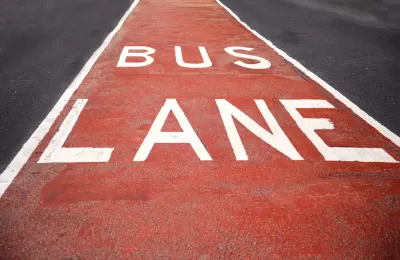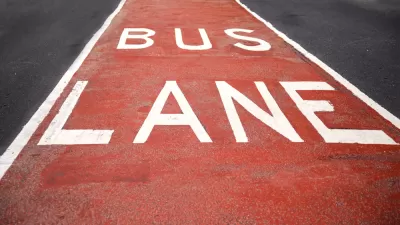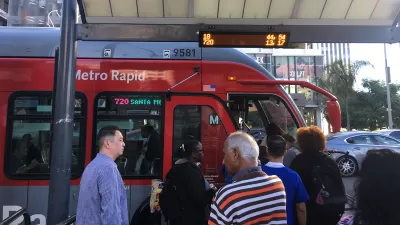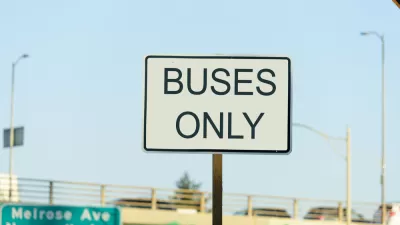A pilot bus-only lane, originally intended to replace temporarily closed light rail service, has produced some big wins for transit advocates on social media.

Back in June, a tweet by Investing in Place set Los Angeles transit Twitter on fire.
This bus only lane got us like Today the @metrolosangeles bus only lane opened on Flower #betterbusesforla #GoMetro @CurrenDPriceJr @josehuizar @MayorOfLA @LADOTofficial @metrolosangeles pic.twitter.com/DEkR2UnMIH
— Investing in Place (@InvestinPlace) June 4, 2019
As reported by Joe Linton for Streetsblog Los Angeles in June , the Flower Street bus-only lane was made necessary by the "New Blue" project underway at the Los Angeles County Metropolitan Transportation Authority (Metro), which has shut down the heavily used Blue Line light rail line for months now. "The upper half of the Blue Line is currently closed through late September," and downtown Expo Line stations shared with the Blue Line will also closed from June 22 through late August, according to Linton.
During construction, Metro is operating replacement bus service, including additional southbound buses on Flower Street through downtown L.A. where the right lane is bus-only from 3-7 p.m. on weekdays. The southbound Flower lane is half of a couplet, paired with the existing northbound bus-only lane on Figueroa Street.
Transit advocates immediately called for the temporary bus-only lane (and the level of enforcement afforded to the lane) to be made permanent. The viral momentum is timed well with highly visible arguments for better bus service around the city. Metro seems to be encouraging that groundswell of support—or stoking the fire, depending on how you want to look at it. The latest viral image is a play on the familiar trope of how many people can fit onto a street in the space apportioned cars, bikes, walking, buses, trains, etc. Except this illustration happens in real time.
Here it is, your moment of Zen (apologies to Jon Stewart and the Daily Show):
A bird's eye view of a dedicated bus lane in action. We're moving nearly 70 buses an hour through the Flower Street bus lane each evening! pic.twitter.com/funsVVdX81
— LA Metro (@metrolosangeles) July 23, 2019
FULL STORY: A bird's eye view of a dedicated bus lane in action

Planetizen Federal Action Tracker
A weekly monitor of how Trump’s orders and actions are impacting planners and planning in America.

Chicago’s Ghost Rails
Just beneath the surface of the modern city lie the remnants of its expansive early 20th-century streetcar system.

San Antonio and Austin are Fusing Into one Massive Megaregion
The region spanning the two central Texas cities is growing fast, posing challenges for local infrastructure and water supplies.

Since Zion's Shuttles Went Electric “The Smog is Gone”
Visitors to Zion National Park can enjoy the canyon via the nation’s first fully electric park shuttle system.

Trump Distributing DOT Safety Funds at 1/10 Rate of Biden
Funds for Safe Streets and other transportation safety and equity programs are being held up by administrative reviews and conflicts with the Trump administration’s priorities.

German Cities Subsidize Taxis for Women Amid Wave of Violence
Free or low-cost taxi rides can help women navigate cities more safely, but critics say the programs don't address the root causes of violence against women.
Urban Design for Planners 1: Software Tools
This six-course series explores essential urban design concepts using open source software and equips planners with the tools they need to participate fully in the urban design process.
Planning for Universal Design
Learn the tools for implementing Universal Design in planning regulations.
planning NEXT
Appalachian Highlands Housing Partners
Mpact (founded as Rail~Volution)
City of Camden Redevelopment Agency
City of Astoria
City of Portland
City of Laramie





























